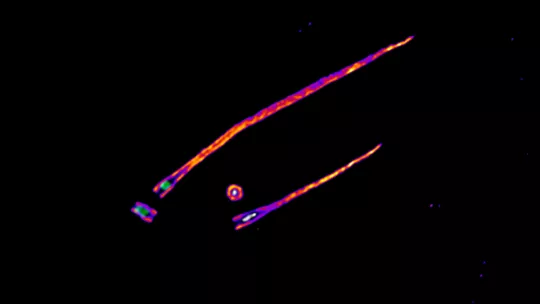Images
Researchers at IRB Barcelona identify the γ-tubulin ring complex (or γTuRC) as responsible for providing stability to centrioles.
Published in Nature Communications, this study offers a new perspective on a range of human diseases related to cytoskeletal and centriole malfunction or malformation.
Centrioles are cylindrical structures involved in the generation of microtubules—fibers inside of cells that form a network to provide structure and shape to cells and to mediate transport processes. In addition, centriole are required to build cilia, hair-like extensions on the cell surface that allow cells to receive and respond to signals from the outside.
Researchers at IRB Barcelona’s Microtubule Organization lab, headed by Dr. Jens Lüders, have identified a new crucial role for γTuRC as a centriole stabilizer and have also identified a form of microcephaly in which this novel function of γTuRC might be perturbed. γTuRC was known to be centriole-related, acting as an initiator of microtubule formation, but this new stabilizer role was not known to date.
Given that microtubules are pivotal for cell function, it is not surprising that their malfunction is associated with a wide range of human diseases. “Our findings suggest that pathologies linked to defects in γTuRC or its localization, such as certain forms of adolescent scoliosis, ophthalmological disorders and male infertility, may involve not only defects in the generation of microtubules but also in centriole stability. We hope this new perspective will lead to a better understanding of these diseases,” Dr. Lüders explains.
Unveiling the γTuRC complex
γTuRC is a protein complex that was discovered over 25 years ago, and it has generated much interest due to its key role in microtubule formation. However, its complex structure, which the Lüders group was able to identify only last year in a collaboration with the Llorca group at the CNIO (Madrid, Spain), has made it hard to obtain a detailed description of its behaviour and functions.
“We had to combine functional assays with expansion microscopy and super-resolution microscopy in human cell cultures to locate γTuRC inside the centriole cylinders and see how it acts as a centriole stabilizer, independent of its role in generating microtubules” says Dr. Nina Schweizer, first author of the work and former postdoctoral researcher at IRB Barcelona.
This work has been performed in collaboration with Dr. Andreas Merdes’ lab at the Centre de Biologie Intégrative, CNRS-Université Toulouse III (Toulouse, France). Work in the Lüders lab has been funded by postdoctoral fellowships to Nina Schweizer (European Commission and EMBO), the Spanish Ministry of Science and Innovation, and the Generalitat de Catalunya.
Related article:
Sub-centrosomal mapping identifies augmin-γTuRC as part of a centriole-stabilizing scaffold
Nina Schweizer, Laurence Haren, Ilaria Dutto, Ricardo Viais, Cristina Lacasa, Andreas Merdes & Jens Lüders
Nature Communications (2021) DOI: 10.1038/s41467-021-26252-5
About IRB Barcelona
The Institute for Research in Biomedicine (IRB Barcelona) pursues a society free of disease. To this end, it conducts multidisciplinary research of excellence to cure cancer and other diseases linked to ageing. It establishes technology transfer agreements with the pharmaceutical industry and major hospitals to bring research results closer to society, and organises a range of science outreach activities to engage the public in an open dialogue. IRB Barcelona is an international centre that hosts 400 researchers and more than 30 nationalities. Recognised as a Severo Ochoa Centre of Excellence since 2011, IRB Barcelona is a CERCA centre and member of the Barcelona Institute of Science and Technology (BIST).









